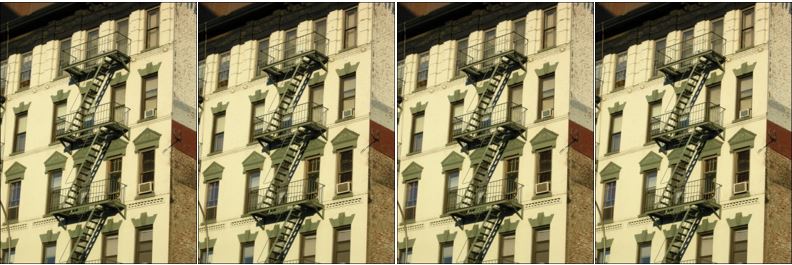The “F” Word – the NYS Legislature Takes a Stab at Defining “Fraud” in the Rent Stabilization Context, But in So Doing, Raises More Questions Than It Provides Answers
UPDATE: March 21, 2024
The aforementioned bill was signed into law on March 1, 2024. I am going to keep the original December 2023 article up online (directly below), however, because the contrast between the original law and the chapter amendment might be useful in future litigations. In any event, let us look at where we are now with respect to the definition of Rent Stabilization Fraud. Here is the new language:
2-a. When a colorable claim that an owner has engaged in a fraudulent scheme to deregulate a unit is properly raised as part of a proceeding before a court of competent jurisdiction or the state division of housing and community renewal, a court of competent jurisdiction or the state division of housing and community renewal shall issue a determination as to whether the owner knowingly engaged in such fraudulent scheme after a consideration of the totality of the circumstances.
In making such determination, the court or the division shall consider all of the relevant facts and all applicable statutory and regulatory law and controlling authorities, provided that there need not be a finding that all of the elements of common law fraud, including evidence of a misrepresentation of material fact, falsity, scienter, reliance and injury, were satisfied in order to make a determination that a fraudulent scheme to deregulate a unit was committed if the totality of the circumstances nonetheless indicate that such fraudulent scheme to deregulate a unit was committed.”
[Emphasis supplied.]
The takeaway seems to be that a “fraudulent scheme to deregulate” is not the same as common law fraud. I am ok with that.
But then, if a “fraudulent scheme to deregulate” is not the same as common law fraud, then what is it? If one cannot look to common law fraud to establish elements of a fraudulent scheme to deregulate, then where do we look for the elements of a claim of a fraudulent scheme to deregulate? The statute asks us to look at the “totality of the circumstances”. Which circumstances? If there “need not be a finding that all of the elements of common law fraud, including evidence of a misrepresentation of material fact, falsity, scienter, reliance and injury”, then one assumes we can still rely upon the presence of some of those elements, combined with the overall circumstances of the matter. This leaves a lot of discretion to individual judges. It is almost as if the legislature is saying to the courts, “Come on, you know a fraudulent scheme to deregulate when you see it.”
UPDATE January 7, 2024
The below article is subject to change. An amendment bill was introduced (A08506) that would change the new law, which is the topic of the below article.
ORIGINAL ARTICLE December 31, 2023
As someone who does not have a “side”, neither landlord nor tenant, and as someone who does a lot of consulting for developers and lenders on multifamily assets, I was happy to see the Legislature take a stab at defining the F word – “Fraud”, in the Rent Stabilization context. But unfortunately, once again, we are left with so many more questions than answers.
This post assumes that the reader has a strong working knowledge of the New York State Rent Stabilization Law. For an awesome overview of the important dilemmas faced by the residential landlord-tenant litigation community on the issue of unlawful deregulations of Rent Stabilized apartments, you must read Judge Karen May Bacdayan’s recent decision in 41-47 Nick LLC v. Odumosu, 2023 WL 6781438 [New York City Civil Court, New York County, 2023], which predates the new law, but frames the issue better than anything I have ever read on the topic, and is truly required reading for anyone who wants to understand what is going on here.
On December 22, 2023, Governor Hochul signed S2980-C/A6216-B (“the Act”). Here is the relevant text of the Act, Part B §§ 2 and 3:
Section 2. (a) Nothing in this act, or the HSTPA, or prior law, shall be construed as restricting, impeding or diminishing the use of records of any age or type, going back to any date that may be relevant, for purposes of determining the status of any apartment under the rent stabilization law;
(b) With respect to the calculation of legal rents for the period either prior to or subsequent to June 14, 2019, an owner shall be deemed to have committed fraud if the owner shall have committed a material breach of any duty, arising under statutory, administrative or common law, to disclose truthfully to any tenant, government agency or judicial or administrative tribunal, the rent, regulatory status, or lease information, for purposes of claiming an unlawful rent or claiming to have deregulated an apartment, whether or not the owner’s conduct would be considered fraud under the common law, and whether or not a complaining tenant specifically relied on untruthful or misleading statements in registrations, leases, or other documents.
The following conduct shall be presumed to have been the product of such fraud: (1) the unlawful deregulation of any apartment, including such deregulation as results from claiming an unlawful increase such as would have brought the rent over the deregulation threshold that existed under prior law, unless the landlord can prove good faith reliance on a directive or ruling by an administrative agency or court; or (2) beginning October 1, 2011, failing to register, as rent stabilized, any apartment in a building receiving J-51 or 421-a benefits.
Section 3. This act shall take effect immediately.”
[Emphasis supplied.]
Now “Fraud”, in the Rent Stabilization context, does not mean common law fraud. Reliance is not an element.
What is “material”?
Thanks to the Act, we now have a statutory definition for “Rent Stabilization Fraud”.
We do not, however, know what “material” in that definition means. I suppose we (meaning the landlord-tenant litigation community) can spend 20 years litigating over that. Fun times.
Let me demonstrate the “material” problem via an example.
Example: It is 2024. A tenant looks at the DHCR rent roll for their apartment. The rent roll shows there was a High Rent Vacancy Deregulation (“HRVD”) in 2008, which cannot be explained by reference to annual Rent Guidelines Board increases, longevity increases, MCI’s, or vacancy increases. When all of those are accounted for, the landlord must have spent, in 2008, $9,000 in order to achieve to the then-deregulation-threshold. It is the landlord’s burden to prove deregulation. Matter of Kostic v DHCR, 188 AD3d 569, 569 [1st Dept 2020]; Connors v Kushner Companies LLC, 2021 WL 3468142 [Supreme Court, Kings County 2021]. But in 2009, there was no obligation to keep the individual apartment improvement records past 2013 (four years). CPLR § 213-a and RSL § 26–516(a)(2) (both before June 14, 2019). There are absolutely no records regarding the renovation of the apartment in 2008. There are no permits at DOB, but one would not necessarily need permits for $9,000 in non-structural work. The building never received a tax abatement. The lease for the first free-market tenant in 2009 shows a rent of $3k per month, so someone must have spent some money on the unit. There have been two different owners since 2008, before the current owner. There have been three different tenants since 2008, before the current tenant. Neither landlord nor tenant have personal knowledge of the events of 2008.
Let us assume, in this example, that the apartment gets pushed back into Rent Stabilization because the landlord cannot meet its burden of demonstrating that $9k was spent on the apartment 16 years and two owners ago, when there was no requirement to keep records beyond four years, in a non-tax-abatement building. And, by the way, I do not assume that in the real world, but let us assume re-regulation for this example. And, also by the way, this scenario exists at this moment for thousands of apartments.
So, you tell me, in the above example, did this landlord commit Rent Stabilization Fraud by the new definition in the Act?
Does this example prove a “material breach of any duty…to disclose truthfully…the rent, regulatory status, or lease information, for purposes of…claiming to have deregulated an apartment”? Does this example prove “the unlawful deregulation of any apartment, including such deregulation as results from claiming an unlawful increase such as would have brought the rent over the deregulation threshold that existed under prior law”?
Does it? Was $9k material? If it was spent 16 years and two owners ago in a non-tax-abatement building when there was no requirement to keep records forever, where the circumstantial evidence of the first post-deregulation rent suggested a great deal of money was spent on the unit? I mean…how do we know the increase was “unlawful”? Is it unlawful merely because it is the landlord’s burden to prove deregulation and it lacked the records that were never supposed to be kept?
I honestly do not know the answer. Well, I do know the answer. It depends on the judge. It depends on the resources of the tenant and the landlord and the skill of the counsel litigating the matter. It depends on whether a butterfly flaps its wings in Katmandu on a Tuesday.
And, thus, this new statutory definition of Rent Stabilization Fraud, provided by the Act, while better than nothing, does not solve the real problem.
How does the legal rent get set?
In pre-June 14, 2019 deregulation cases, you can look back beyond four years for purposes of establishing the legal rent, if there is fraud. But what are you looking back to find and how do you know when you have found it? This new fraud definition does nothing to solve the percolating problem with respect to the “DHCR Default Method” (RSC § 2522.6(b)) and the hunt for a reliable rent. Grimm v. DHCR, 15 NY3d 358 [2010].
Grimm is often cited as a fraud case. But the court in Grimm did not conclude that there was (or was not) fraud. Rather, the court in Grimm determined that there was an allegation that there was no reliable rent upon which to set the base rent: “Our holding should not be construed as concluding that fraud exists, or that the default formula should be used in this case. Rather, we merely conclude that DHCR acted arbitrarily in disregarding the nature of petitioner’s allegations and in using a base date without, at a minimum, examining its own records to ascertain the reliability and the legality of the rent charged on that date.” [Emphasis supplied.]
In Simpson v 16-26 E. 105, LLC, 176 AD3d 418 [1st Dept 2019], this is more explicitly stated: “…the default formula is applied to calculate compensatory overcharge damages where no other method is available. Moreover, it is applied equally in cases in which the owner has engaged in fraud and in cases in which the base date rent simply cannot be determined or the rent history is unavailable.” [Emphasis supplied.]
More support for this approach is found farther back in First Department jurisprudence, which is still good and widely cited law, for the concept that the DHCR Default Method can and should be utilized where there is no finding of a landlord fraudulent scheme. Levinson v. 390 West End Associates, L.L.C., 22 AD3d 397 [1st Dept 2005], explains that particularly when there is no fraud look-back, the default method may apply if there is no reliable base rent, holding, “Here, as in Thornton, a default formula must be used to determine the current legal rent, since it is conceded that the rent actually charged on the base date was unlawful, and the statute of limitations does not permit us to use any rental history prior to the base date in setting the current legal rent.”
This is a dilemma for another blog post. In the meantime, see Wasserman v. Gordon, 24 AD3d 201 [1st Dept 2005]; 215 W 88th Street Holdings LLC v. DHCR, 143 AD3d 652 [1st Dept 2016]; and Lexford Properties, L.P. v. Alter Realty Co., Inc., 31 Misc.3d 142(A) [App Term, 1st Dept, 2011].
So fraud begets an infinite look-back. But what are we looking back to find? The answer in the case law has been “a reliable rent”. Thornton v. Baron, 5 NY3d 175 [2005]; Conason v. Megan Holding, LLC, 25 NY3d 1 [2015]. But what is a “reliable rent”? Do we go back to 1984 and run a spreadsheet calculating what the rent should be today? If so, what assumptions do we build in when we lack information about lengths of tenancies and vacancies? Moreover, as demonstrated above, “a reliable rent” is also the holy grail in non-fraud cases. All of which has always been in tension with post-Regina case law. About that…
Retroactivity?
Finally, and perhaps I should have started with this, but I did not want to rain on everyone’s parade – how does the Act withstand a constitutional challenge such as HSTPA Part F succumbed to in Matter of Regina Metro Co., LLC v. DHCR, 35 NY3d 332 [2020]? In relevant part, Regina held:
Part F of the HSTPA includes amendments that, among other things, extend the statute of limitations, alter the method for determining legal regulated rent for overcharge purposes and substantially expand the nature and scope of owner liability in rent overcharge cases…Civil liability is always bounded by the public policy of repose embodied in statutes of limitations [citations omitted]…Overcharge liability under the RSL is no different. That Roberts revealed particular conduct to be illegal does not mean that tenants must be able to recover a certain measure of monetary damages for associated rent increases despite their failure to seek recovery within the limitations and lookback periods.”
The Court of Appeals has already said that it offends the constitutional principle of repose to change the penalty for a past wrong. Is the Act not the HSTPA Part F all over again, just with a different bill number? Or perhaps is the current makeup of the Court of Appeals different enough from the Regina Court of Appeals that we can expect a different outcome? Like I said, fun times.
Conclusion
I am really not trying to be difficult. I would like answers to all these questions. If I had the answers, I could do my job better, whether I am consulting or litigating, for tenants or landlords or lenders. But this new legislation unfortunately takes us no closer. Rather, the Act gives us new things to argue about. Now we need to re-litigate the retroactivity issue and we must fight about what is “material” and “unlawful” and “reliable”.
The government persists in regulating one million apartments in New York City. I am not commenting on whether that is a good or a bad thing. The problem is that the government never devoted the resources to enforcing that regulation, which was necessary for such a sweeping statutory scheme. From 1997 through June 14, 2019, HRVD did not require DHCR approval. They left it up to landlords to decide whether an apartment was High Rent Vacancy Deregulated. The government put the fox in charge of the henhouse and then blamed the foxes for being hungry. Now we are spending decades litigating which apartments were properly deregulated and, if re-regulated, what their legal rents should be. Unfortunately, it is tenants, small landlords, and lenders who have paid the highest price for those legislative mistakes.
I, for one, will keep trying to put the pieces together.
Respectfully submitted,






